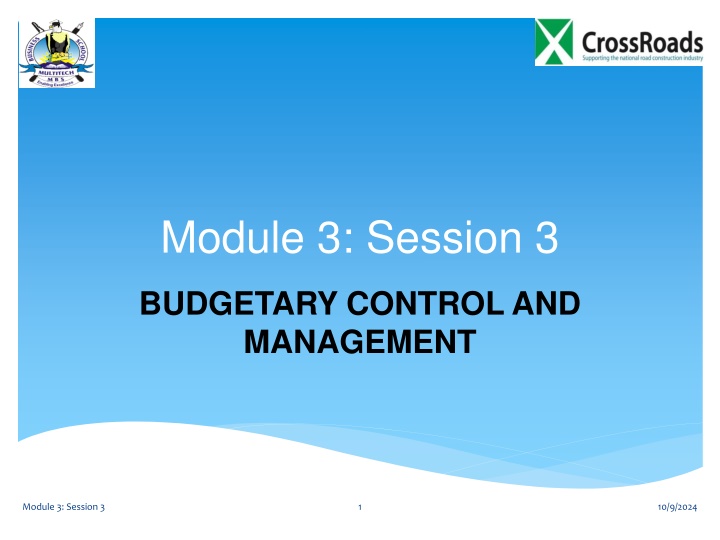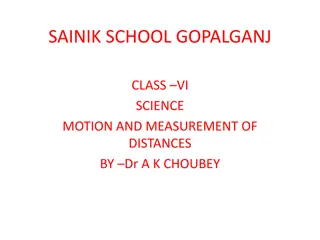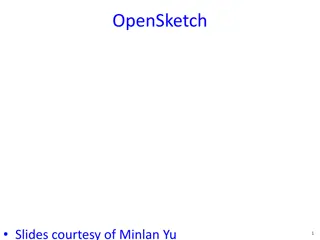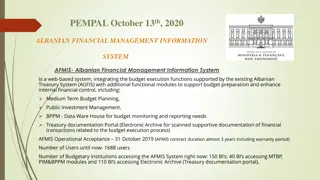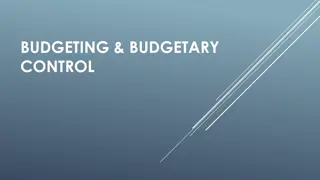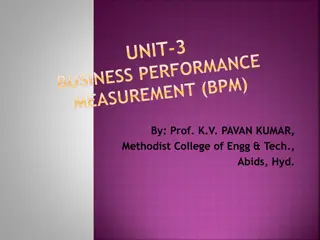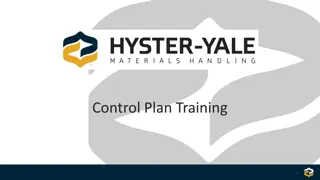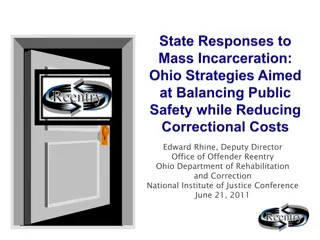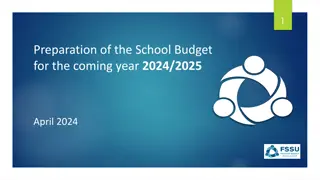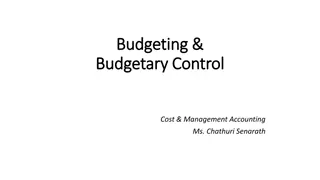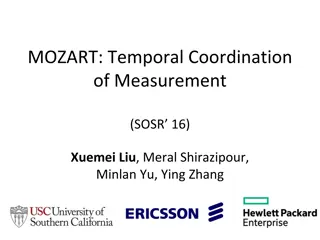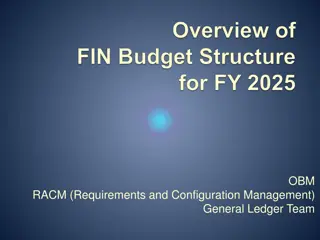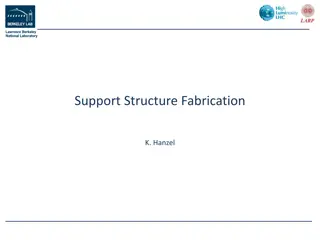Budgetary Control and Management in Performance Measurement
Budgetary control involves ensuring that implementation aligns with plans to achieve objectives and minimize unfavorable variances. Common variances include volume, usage/efficiency, and price/rate variations. Understanding and addressing these variances are essential for effective budget management and measuring performance accurately.
Download Presentation

Please find below an Image/Link to download the presentation.
The content on the website is provided AS IS for your information and personal use only. It may not be sold, licensed, or shared on other websites without obtaining consent from the author.If you encounter any issues during the download, it is possible that the publisher has removed the file from their server.
You are allowed to download the files provided on this website for personal or commercial use, subject to the condition that they are used lawfully. All files are the property of their respective owners.
The content on the website is provided AS IS for your information and personal use only. It may not be sold, licensed, or shared on other websites without obtaining consent from the author.
E N D
Presentation Transcript
Module 3: Session 3 BUDGETARY CONTROL AND MANAGEMENT Module 3: Session 3 1 10/9/2024
Session objectives Understanding the connection between implementation and the budget in measuring performance. Module 3: Session 3 2 10/9/2024
What is budget control? 1) Ensuring that implementation corresponds to plans: objectives, outputs, timing, outcomes, costs and ensuring that the profit motive is not undermined. 2) Note all variances directly affect profit, unfavourable ones should be minimised 3) Identifying deviations and making corrective decisions 4) Finding out why the deviation? Who is responsible? Is it controllable? What needs to be done? Module 3: Session 3 3 10/9/2024
Common Variances A variance is the difference between planned and actual results. Such a difference is the total variance for that budget line. A variance is either favourable or adverse (unfavourable). Total variance is broken down into three common variances: Volume Usage or efficiency Price or rate Total variance = (volume + usage + efficiency variances). Module 3: Session 3 4 10/9/2024
Volume variance Difference due to actual output differing from planned output valued at the budgeted rates. For example if we planned to do 24kms of road but we actually do 20kms, the volume variance is 4kms. Revenue volume variance would be 4kmsx450m= 1,800m(A) Material volume variance would be 4kmsx8,000tonesx24,000 = 768m(F) Labour Volume variance would be 4kmsx72m= 288m(F) Fuel volume variance would be 4kmsx9,000ltrsx3,500= 126m(F) Volume variance is the budgeted revenue/costs for actual work done as compared with the total work budgeted. The net volume variance therefore is the budgeted profit lost due to non performance (or earned due to additional work done). Module 3: Session 3 5 10/9/2024
Usage/efficiency variance Usage variance arises due to used material for actual output differing from that expected valued at the budgeted cost. (expected Q actual Q)x budgeted cost Efficiency variance arises due to used time for actual output differing from that expected, valued at the budgeted rate. (expected hrs actual hrs)x budgeted rate Favourable means economy or efficiency when adverse means wastage or inefficiency. Module 3: Session 3 6 10/9/2024
Price/rate variance A price variance is caused when the price of the inputs differs from that budgeted for. (budgeted price actual price)x actual quantity. A rate variance arises when the rate of labour or hire inputs differs from that budgeted for. (budgeted rate actual rate)x actual time. A price variance also arises on revenue when sales price (or rate) differs from budgeted price (or rate). Module 3: Session 3 7 10/9/2024
Interpretation of variances and their implications Variance may be in terms of comparing budget outputs and unit cost with actual outputs and unit costs Analysis is to determine the cause of the variance, responsibility centre and develop corrective action Action may be to change course, promote the variation or do nothing Module 3: Session 3 8 10/9/2024
Variances and corrective action During variance analysis focus on controllable elements e.g. to focus on the prices variance of electricity will be futile whereas electricity usage variance is controllable. To be effective, administrators should identify the budget items they can control versus those they can't. Variances could be interlinked, look out for the linkage e.g. a favourable material price variance could be linked to an adverse material usage variance and an adverse labour efficiency variance if the material bought was substandard! Module 3: Session 3 9 10/9/2024
Work variations and variance analysis Contract Variation is most often when some extra work gets added to a project after the contract has been signed. Such additions form volume variances An expenditure variation is due to any change from the original scope of works and extra income could be sought for this expense. Module 3: Session 3 10 10/9/2024
Variance analysis summary. Determine the variance say in labour, materials, overheads Investigate possible cause of variances Propose and implement corrective action. Module 3: Session 3 11 10/9/2024
Group activity: Expenditure Revenue source yr1 yr2 yr3 yr4 yr5 Contract one Contract two Contract three Total Module 3: Session 3 12 10/9/2024
Group activity: expenditure variances Particulars Budgeted Six Actual six months variance comment month budget Materials Labour Administration and overheads Construction Total Module 3: Session 3 13 10/9/2024
Group presentations 1. Using the budget developed from the previous session and the actual performance provided, find out the causes of cost variances and suggest persons responsible. 2. Develop a simple control budget for Munaku. Use the control budget to propose a budget for 5kms of road done. Module 3: Session 3 14 10/9/2024
